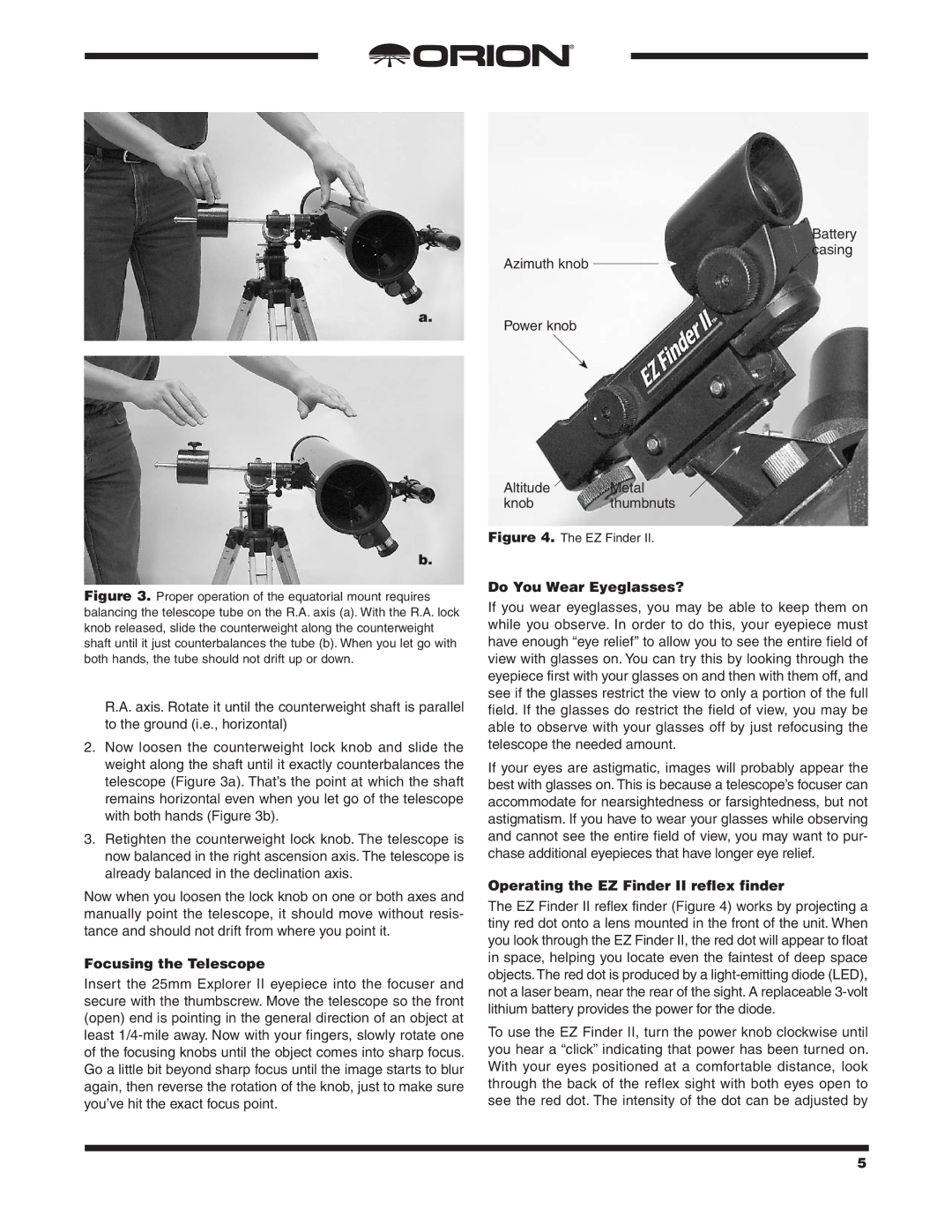
®
a.
b.
Figure 3. Proper operation of the equatorial mount requires balancing the telescope tube on the R.A. axis (a). With the R.A. lock knob released, slide the counterweight along the counterweight shaft until it just counterbalances the tube (b). When you let go with both hands, the tube should not drift up or down.
R.A. axis. Rotate it until the counterweight shaft is parallel to the ground (i.e., horizontal)
2.Now loosen the counterweight lock knob and slide the weight along the shaft until it exactly counterbalances the telescope (Figure 3a). That’s the point at which the shaft remains horizontal even when you let go of the telescope with both hands (Figure 3b).
3.Retighten the counterweight lock knob. The telescope is now balanced in the right ascension axis. The telescope is already balanced in the declination axis.
Now when you loosen the lock knob on one or both axes and manually point the telescope, it should move without resis- tance and should not drift from where you point it.
Focusing the Telescope
Insert the 25mm Explorer II eyepiece into the focuser and secure with the thumbscrew. Move the telescope so the front (open) end is pointing in the general direction of an object at least
Battery casing
Azimuth knob
Power knob
Altitude ![]() Metal
Metal
knobthumbnuts Figure 4. The EZ Finder II.
Do You Wear Eyeglasses?
If you wear eyeglasses, you may be able to keep them on while you observe. In order to do this, your eyepiece must have enough “eye relief” to allow you to see the entire field of view with glasses on. You can try this by looking through the eyepiece first with your glasses on and then with them off, and see if the glasses restrict the view to only a portion of the full field. If the glasses do restrict the field of view, you may be able to observe with your glasses off by just refocusing the telescope the needed amount.
If your eyes are astigmatic, images will probably appear the best with glasses on. This is because a telescope’s focuser can accommodate for nearsightedness or farsightedness, but not astigmatism. If you have to wear your glasses while observing and cannot see the entire field of view, you may want to pur- chase additional eyepieces that have longer eye relief.
Operating the EZ Finder II reflex finder
The EZ Finder II reflex finder (Figure 4) works by projecting a tiny red dot onto a lens mounted in the front of the unit. When you look through the EZ Finder II, the red dot will appear to float in space, helping you locate even the faintest of deep space objects. The red dot is produced by a
To use the EZ Finder II, turn the power knob clockwise until you hear a “click” indicating that power has been turned on. With your eyes positioned at a comfortable distance, look through the back of the reflex sight with both eyes open to see the red dot. The intensity of the dot can be adjusted by
5
